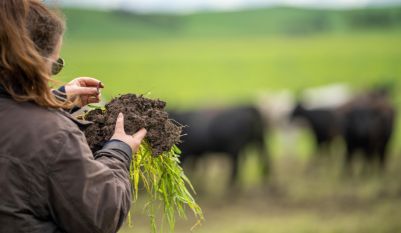Farm baselining: Emissions and Natural Capital
Step one in taking on-farm climate action is to work out your emissions baseline, or carbon footprint.
search for tools
Step one in taking on-farm climate action is to work out your emissions baseline, or carbon footprint.


There are several carbon calculators either in development or already available in Australia. These calculators aim to help farmers baseline their on-farm emissions.
FCA recommends always choosing an Australian-based calculator, as these are developed specifically with Australian conditions and farming practices in mind. They’re also more likely to fulfil any Australian government or sectoral accounting and auditing requirements.
| Resource | Description |
|---|---|
| For Single-Commodity Farmers | Most of the commodity RDPs have developed or are developing commodity-specific carbon calculators, funded through farmer levies. FCA suggests that you start with your RDC first (see: Dairy Australia, Meat and Livestock Australia, Australian Wine). |
| For mixed-farming properties or where the RDC doesn’t have a calculator | The Beef and Sheep Greenhouse Accounting Framework (BS-GAF), and Grains Greenhouse Accounting Framework (G-GAF) tools are developed and maintained by the Primary Industries Challenge Centre and the University of Melbourne. These MS Excel-based tools are freely available to download. |
| If your RDC either doesn’t have a finalised calculator, or you are a cross-commodity farmer | Agricultural Innovation Australia (AIA) has developed an Environmental Accounting Platform to deliver a cross-sectoral carbon footprint solutions for producers. Beef, sheep, goats, feedlot, grains, sugar, pork, cotton and poultry commodities are currently available on the tool. |
| Banking sector calculators | Some of the major rural banks are also working with their customers to help them calculate their carbon baseline. You may wish to contact your bank to see what resources they offer to help you to undertake your carbon baselining. |
Calculating your first carbon baseline can take some time, but once you have the data available, it’s reasonably quick and easy to repeat over time. The information required to baseline your farm is often readily available in records you already hold based on your farm’s production metrics.

Understanding the state of environmental assets on your farm is an important step to improving the environment and overall sustainability of your farm, and to monitoring whether your actions are working. The agriculture and land sector are partnering with universities on projects to develop tools and methods to baseline farms according to their ecological profile. Landcare’s Natural Capital Accounting Benchmark Project is one of these projects. This section will be updated as more information and resources become available.
Other information which can be considered is below:
| Resource |
|---|
| EOV Monitoring | Australian Holistic Management Co-operative |
| Home – NatureMapr Australia – which provides a citizen science platform to monitor biodiversity |
| Farming for the Future – Evolving Farm Business |
This toolkit isn’t exhaustive and FCA will be adding more resources over time – if you know of another great resource that should be added please send in your suggestions to [email protected] with subject “CSFT Suggestion”.
 Back to toolkit
Back to toolkit